Abstract
Low mid-upper-arm circumference (MUAC), determined on the basis of a fixed cut-off value, has commonly been used as a proxy for low weight-for-height (wasting). The use of a fixed cut-off value was based on the observation that MUAC showed small age- and sex-specific differences. However, in 1993, a WHO Expert Committee concluded that age independence is not reflected in the true pattern of mid-upper arm growth, recommended the use of MUAC-for-age, and presented age- and sex-specific MUAC reference data developed with observations obtained from a representative sample of children in the USA aged 6-59 months. In this article, we explain the methodology for the development of these data, present age- and sex-specific growth curves and tables and discuss the applications and limitations of MUAC as a nutritional indicator. To develop the reference data, estimates were first obtained for the mean and standard deviation of MUAC for each month of age using 7-month segmental regression equations; a 5th-degree and a 3rd-degree polynomial in age was then used to describe the mean and standard deviation, respectively, of MUAC-for age. These curves show important age-specific differences, and significant sex-specific differences for boys and girls < 24 months of age. Correct interpretation of MUAC with regard to nutritional status requires the use of MUAC-for-age reference data such as those presented here.
Full text
PDF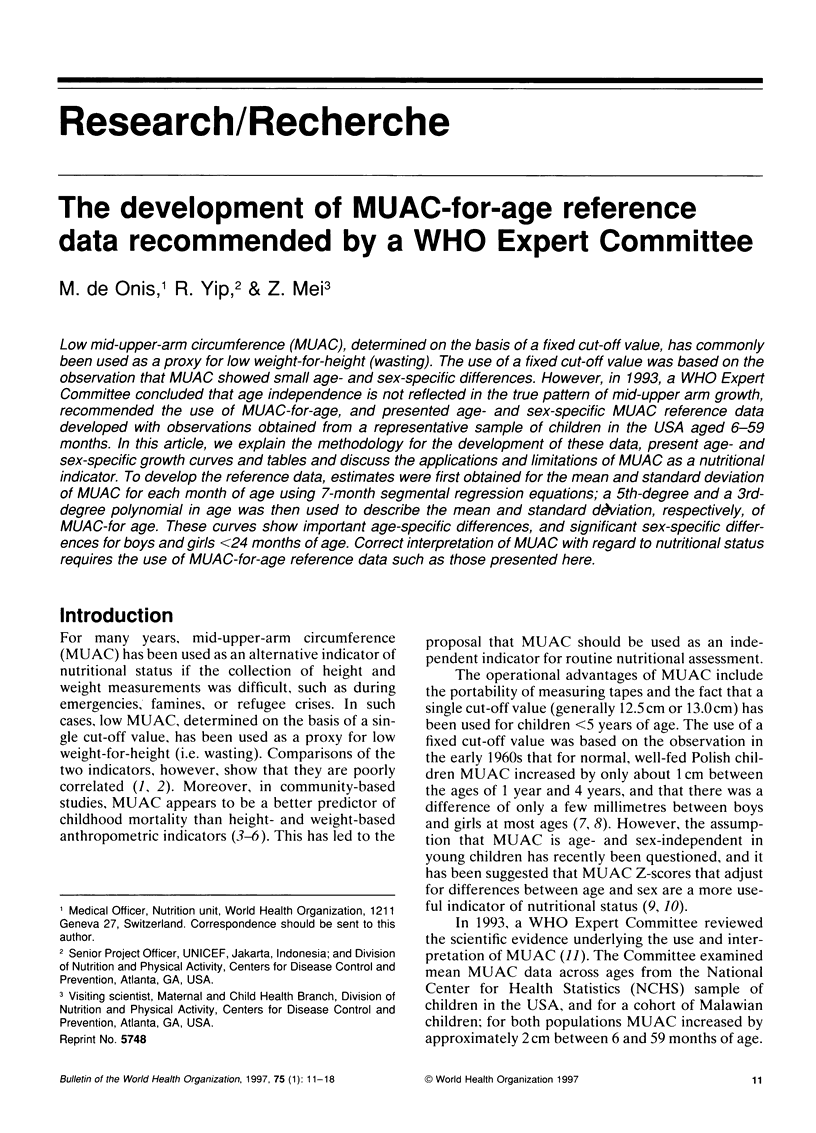
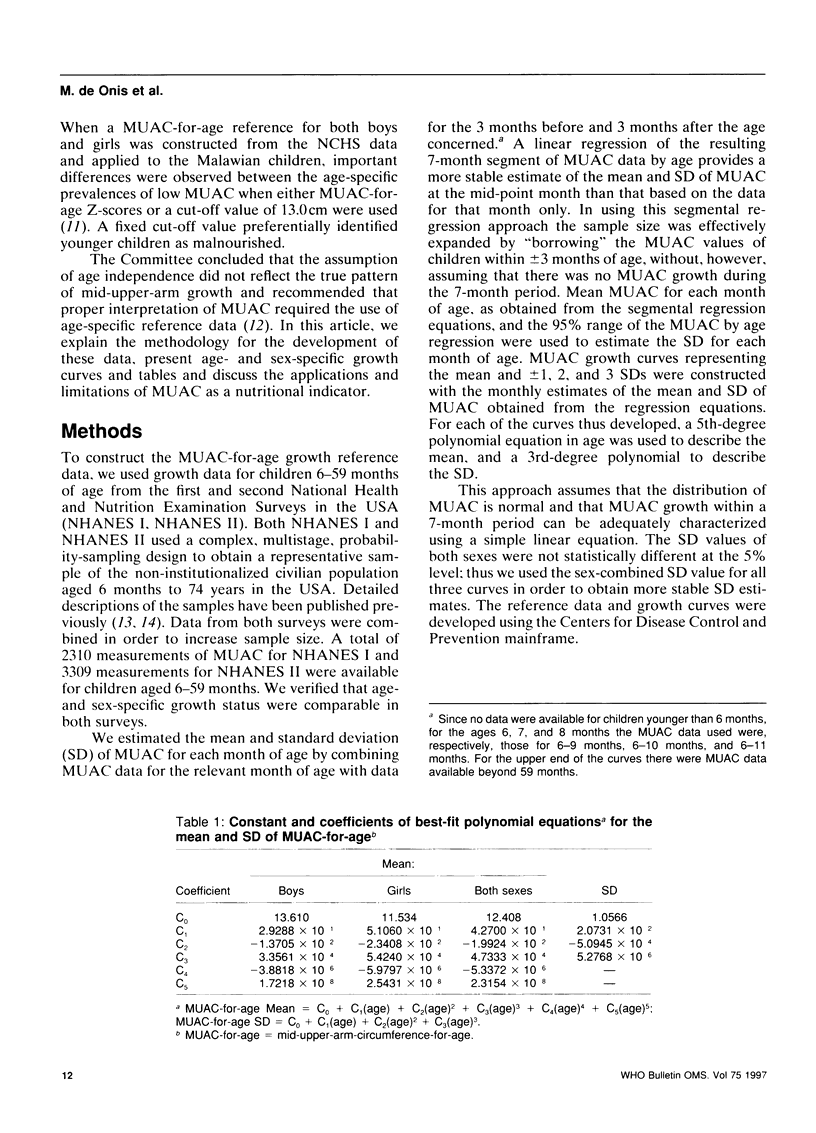

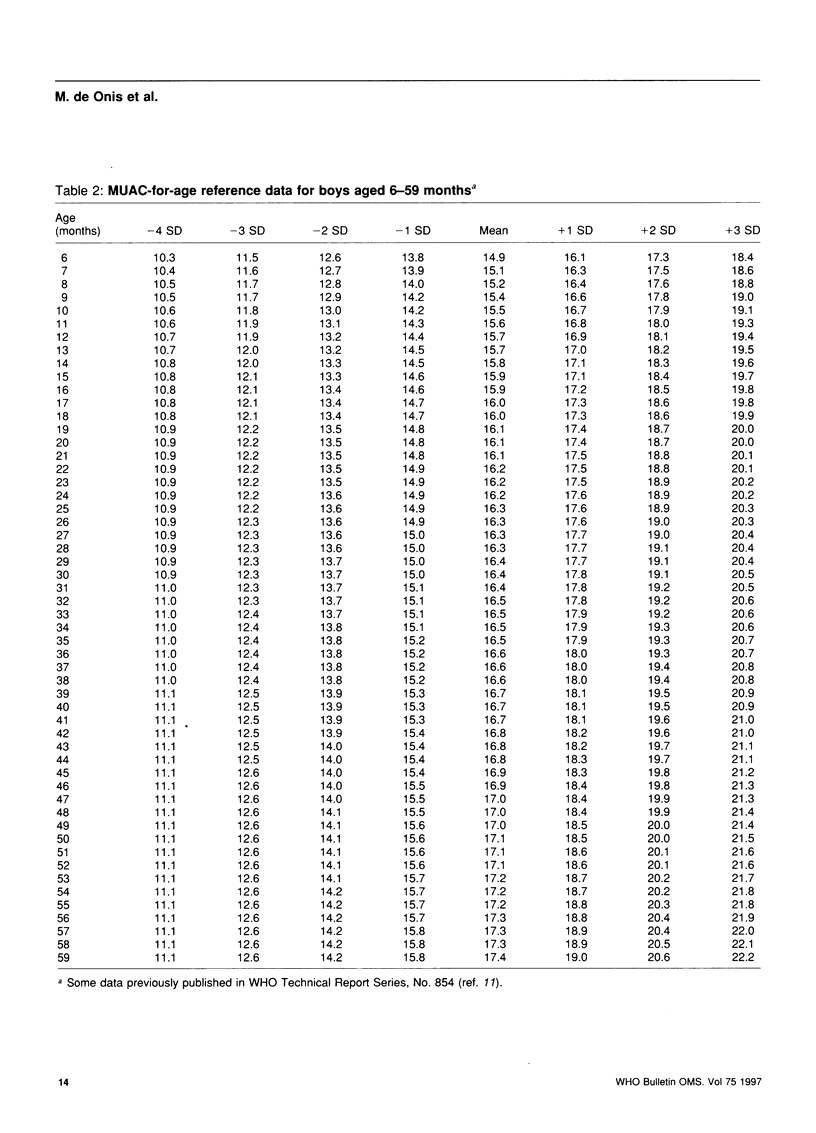

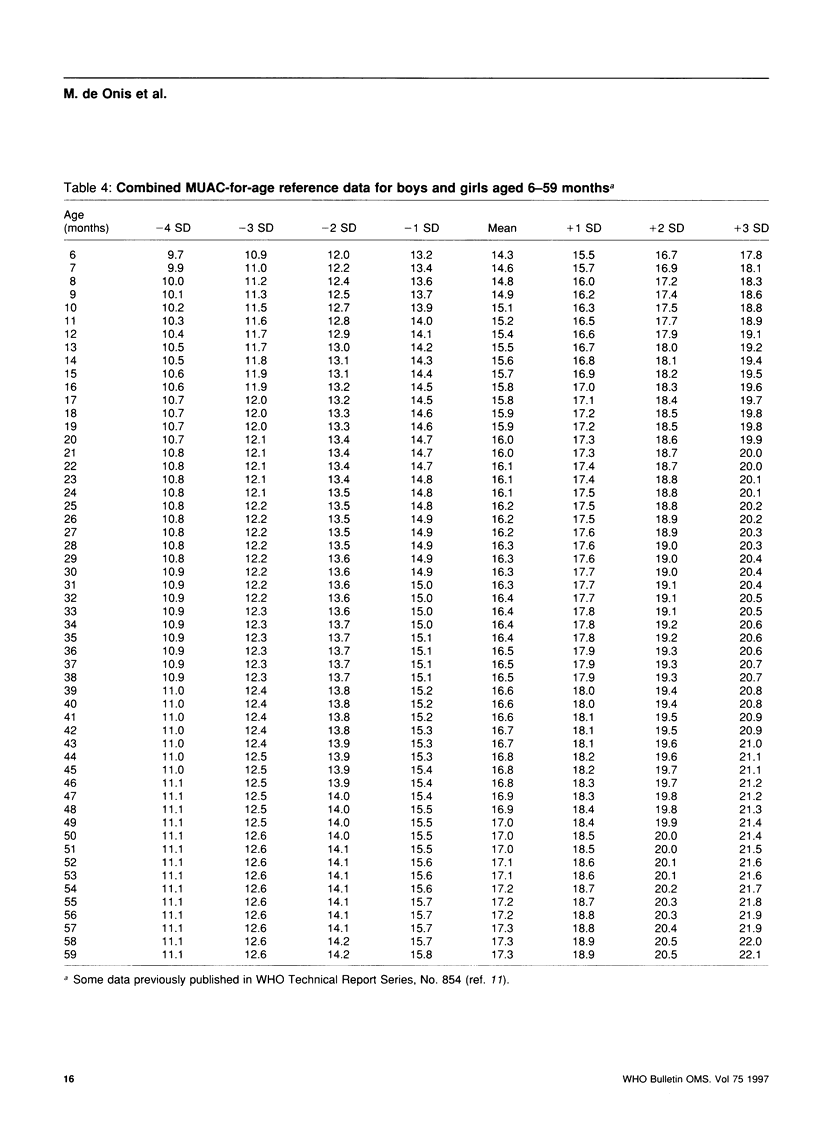
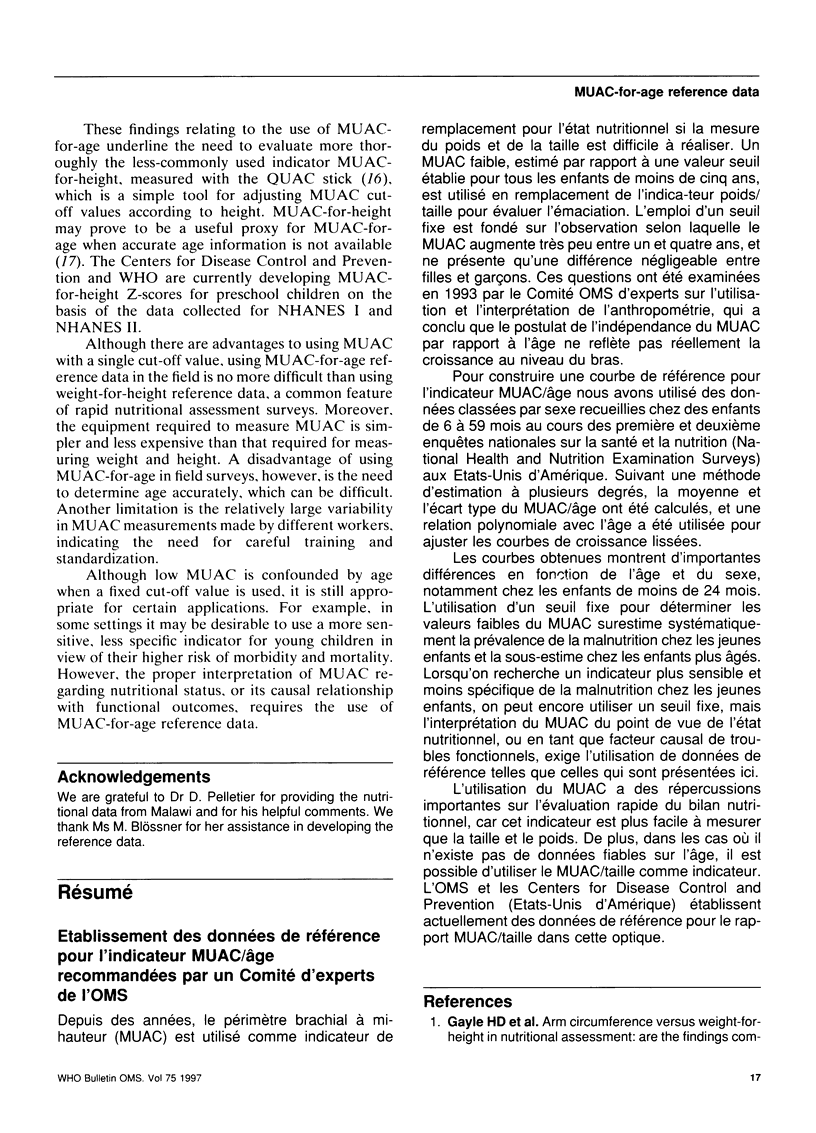
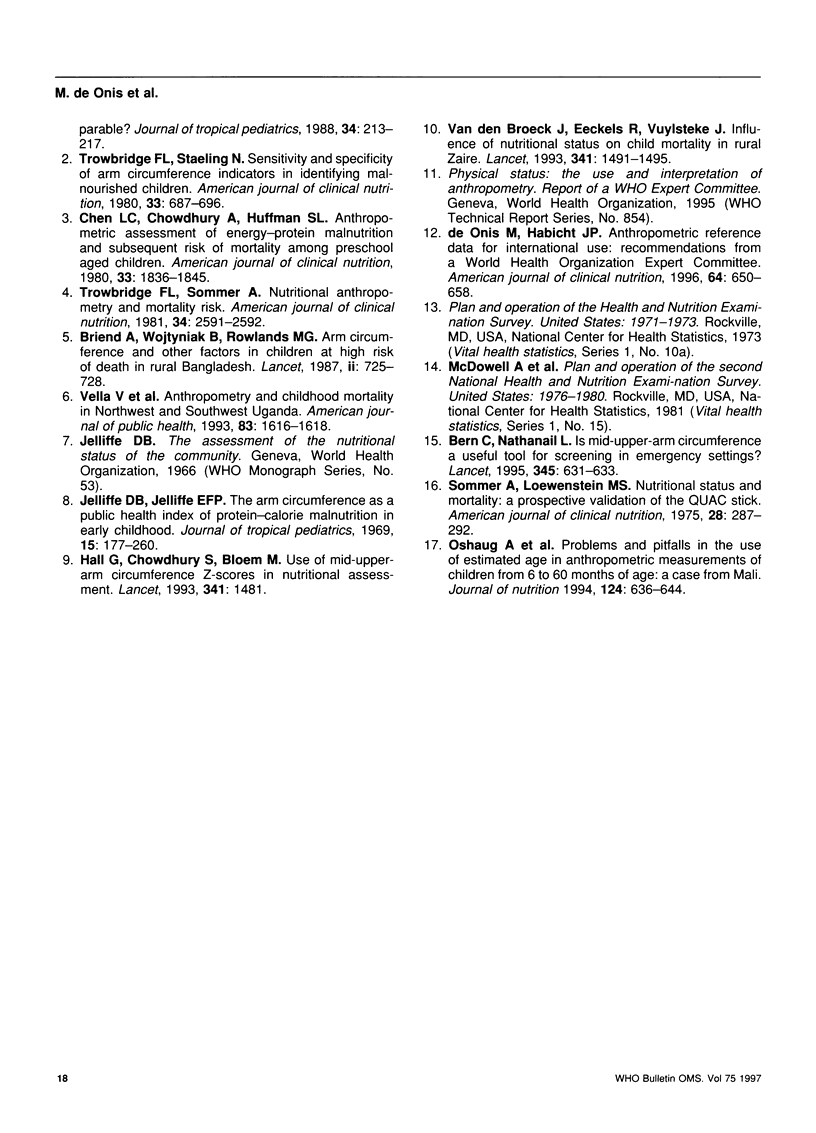
Selected References
These references are in PubMed. This may not be the complete list of references from this article.
- Bern C., Nathanail L. Is mid-upper-arm circumference a useful tool for screening in emergency settings? Lancet. 1995 Mar 11;345(8950):631–633. doi: 10.1016/s0140-6736(95)90527-8. [DOI] [PubMed] [Google Scholar]
- Briend A., Wojtyniak B., Rowland M. G. Arm circumference and other factors in children at high risk of death in rural Bangladesh. Lancet. 1987 Sep 26;2(8561):725–728. doi: 10.1016/s0140-6736(87)91084-1. [DOI] [PubMed] [Google Scholar]
- Chen L. C., Chowdhury A., Huffman S. L. Anthropometric assessment of energy-protein malnutrition and subsequent risk of mortality among preschool aged children. Am J Clin Nutr. 1980 Aug;33(8):1836–1845. doi: 10.1093/ajcn/33.8.1836. [DOI] [PubMed] [Google Scholar]
- Hall G., Chowdhury S., Bloem M. Use of mid-upper-arm circumference Z scores in nutritional assessment. Lancet. 1993 Jun 5;341(8858):1481–1481. doi: 10.1016/0140-6736(93)90927-9. [DOI] [PubMed] [Google Scholar]
- Oshaug A., Pedersen J., Diarra M., Bendech M. A., Hatløy A. Problems and pitfalls in the use of estimated age in anthropometric measurements of children from 6 to 60 months of age: a case from Mali. J Nutr. 1994 May;124(5):636–644. doi: 10.1093/jn/124.5.636. [DOI] [PubMed] [Google Scholar]
- Sommer A., Loewenstein M. S. Nutritional status and mortality: a prospective validation of the QUAC stick. Am J Clin Nutr. 1975 Mar;28(3):287–292. doi: 10.1093/ajcn/28.3.287. [DOI] [PubMed] [Google Scholar]
- Trowbridge F. L., Sommer A. Nutritional anthropometry and mortality risk. Am J Clin Nutr. 1981 Nov;34(11):2591–2592. doi: 10.1093/ajcn/34.11.2591. [DOI] [PubMed] [Google Scholar]
- Trowbridge F. L., Staehling N. Sensitivity and specificity of arm circumference indicators in identifying malnourished children. Am J Clin Nutr. 1980 Mar;33(3):687–696. doi: 10.1093/ajcn/33.3.687. [DOI] [PubMed] [Google Scholar]
- Van Den Broeck J., Eeckels R., Vuylsteke J. Influence of nutritional status on child mortality in rural Zaire. Lancet. 1993 Jun 12;341(8859):1491–1495. doi: 10.1016/0140-6736(93)90632-q. [DOI] [PubMed] [Google Scholar]
- Vella V., Tomkins A., Borghesi A., Migliori G. B., Ndiku J., Adriko B. C. Anthropometry and childhood mortality in northwest and southwest Uganda. Am J Public Health. 1993 Nov;83(11):1616–1618. doi: 10.2105/ajph.83.11.1616. [DOI] [PMC free article] [PubMed] [Google Scholar]
- de Onis M., Habicht J. P. Anthropometric reference data for international use: recommendations from a World Health Organization Expert Committee. Am J Clin Nutr. 1996 Oct;64(4):650–658. doi: 10.1093/ajcn/64.4.650. [DOI] [PubMed] [Google Scholar]


